You’re enthusiastic to add some heat to your cooking, and growing jalapenos in a pot seems like the perfect solution.
But before you start, it’s crucial to get the basics right. You’ll need a well-draining potting mix with a balanced pH, a container that breathes, and a spot with ample light.
But that’s just the beginning. With the right foundation in place, you’ll still need to navigate the intricacies of watering, fertilizing, and pruning to guarantee a thriving plant.
What’s the secret to avoiding common pitfalls and enjoying a bountiful harvest?
Let’s explore the necessary steps to successfully growing jalapenos in a pot.
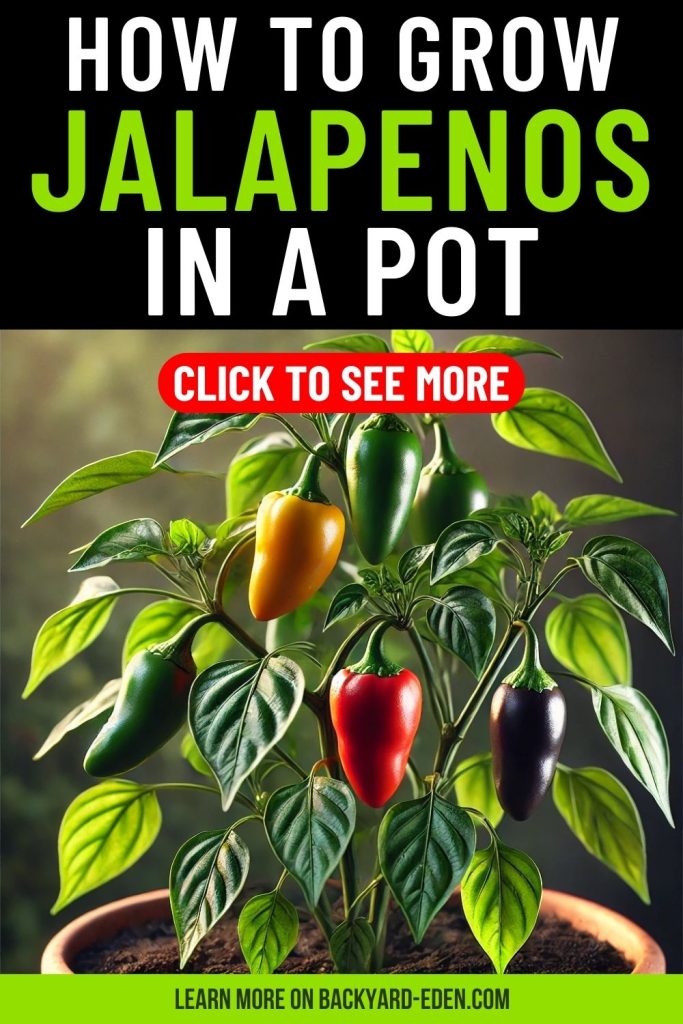
Key Takeaways
- Choose a well-draining potting mix with a pH between 6.0 and 7.0 to prevent waterlogged soil and root rot.
- Select a container with drainage holes to ensure excess water is removed and prevent waterlogging.
- Provide jalapeno plants with direct sunlight for at least 6 hours a day and maintain soil moisture by checking daily.
- Fertilize jalapeno plants with a balanced fertilizer to promote healthy growth and productivity, and prune for better growth and fruiting.
- Monitor and control temperature between 65-75°F (18-24°C) and watch for common pests and diseases to ensure a healthy harvest.
Choose the Right Potting Mix
You’ll need a well-draining potting mix specifically designed for containers to give your jalapeno plants the best start. A good potting mix should have a well-balanced soil structure that allows for ideal water penetration and aeration. This is essential for jalapeno plants, which are prone to root rot if the soil is too dense or waterlogged.

Look for a mix that contains a significant amount of organic matter, such as peat moss or compost, which helps to retain moisture and provide nutrients to the plants. A mix with a pH between 6.0 and 7.0 is ideal for jalapenos, as they prefer slightly acidic to neutral soil conditions.
Avoid using garden soil from your yard, as it can compact and prevent proper drainage in containers. Instead, opt for a high-quality potting mix that’s specifically formulated for containers.
Select a Container With Drainage
When selecting a container for your jalapeno plants, you’ll want to take into account a few key factors to guarantee ideal growth.
You’ll need to choose a container that’s the right size for your plant’s mature size, as well as one made from a material that allows for good air circulation and moisture wicking.
Additionally, make sure your container has holes for excess water to drain out, preventing waterlogged soil that can be detrimental to your plant’s health.
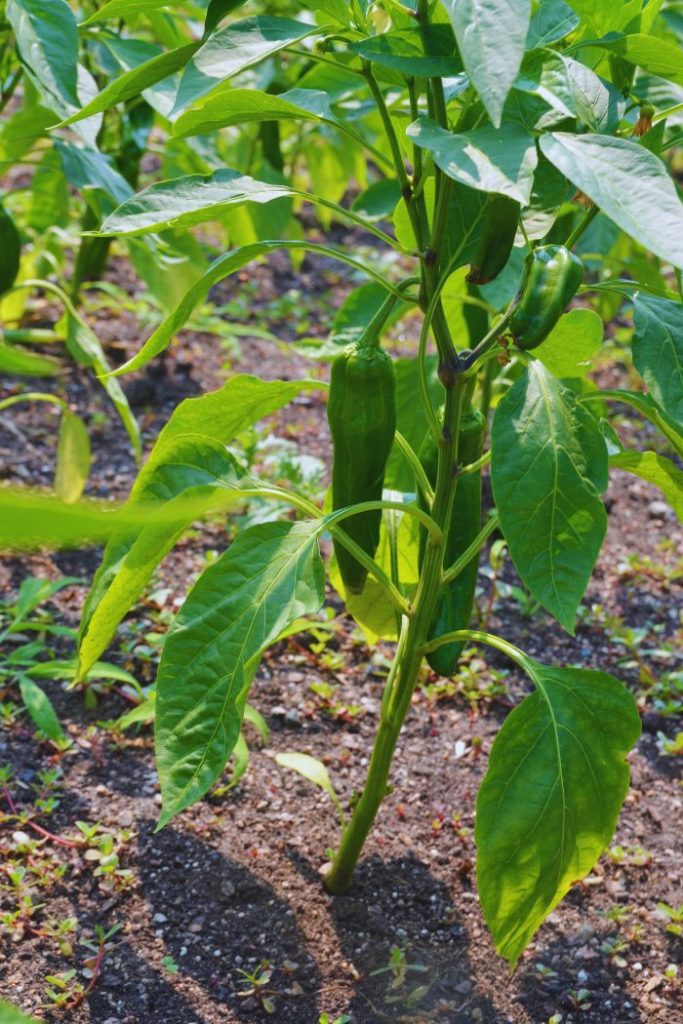
Choose the Right Size
Selecting a container that’s at least 6-8 inches deep and 8-12 inches wide is essential to provide adequate room for the jalapeno plant’s roots to grow and thrive. This size range allows for a balance between pot capacity and space efficiency, ensuring your plant has enough room to spread out without taking up too much space.

You’ll need to take into account the mature size of your jalapeno plant, which can grow up to 2-3 feet tall, when choosing your container. A larger pot will give the roots more room to grow, resulting in a healthier and more productive plant. However, if you’re short on space, a smaller pot with good drainage can still yield a bountiful harvest. Just be sure to adjust your watering schedule accordingly, as smaller pots will dry out faster.
Material Matters Most
What makes a container suitable for growing jalapenos is its ability to drain excess water, a feature that prevents waterlogged soil and root rot.
When selecting a pot, you’ll want to prioritize materials that facilitate drainage. You may be tempted to opt for a sleek, modern pot made of plastic or fiberglass, but these materials can retain water, putting your jalapeno plants at risk.
Instead, consider pottery or ceramic containers, which naturally breathe and allow for better airflow. A Pottery Comparison will show you that terracotta pots, in particular, are an excellent choice. These earthenware containers are porous, allowing excess water to escape, and their natural texture promotes healthy root growth.
When conducting a Clay Analysis, you’ll find that terracotta’s absorbency and permeability make it an ideal material for jalapeno cultivation.
Holes for Excess Water
You’ll typically find that pots designed for best drainage have holes in the bottom or sides, allowing excess water to escape freely. This is important because jalapeno plants hate wet feet, and waterlogged soil can be detrimental to their growth. In fact, poor drainage can lead to root rot, which can quickly kill your plants. That’s why selecting a container with proper drainage is vital.
The importance of drainage can’t be emphasized enough. When water accumulates in the soil, it prevents oxygen from reaching the roots, causing them to suffocate. This, in turn, weakens the plant, making it more susceptible to disease and pests.
On the other hand, a well-draining pot ensures that excess water is quickly removed, allowing the roots to breathe and the plant to thrive. So, when choosing a pot, look for one with holes or a built-in drainage system. This simple step can make all the difference in the health and productivity of your jalapeno plants.
Obtain Jalapeno Seeds or Seedlings
Now that you’ve decided to grow jalapenos in a pot, acquiring high-quality seeds or seedlings is the crucial first step towards a successful harvest.
You can either start from seeds or purchase seedlings from a reputable nursery or online supplier. When buying seeds, make sure to choose a reputable supplier that conducts rigorous seed quality control.
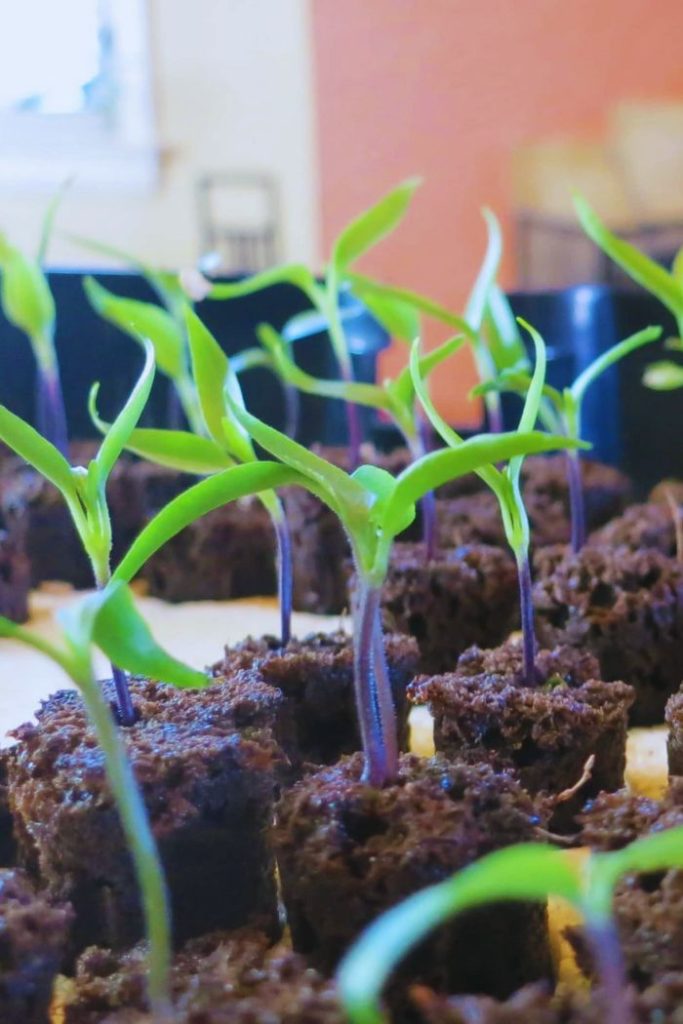
Look for seeds that have been stored properly, in a cool, dry place, to guarantee maximum germination rates. For best storage, keep seeds in an airtight container in the refrigerator to maintain humidity and temperature control.
If you opt for seedlings, select those with sturdy stems, bright green leaves, and no signs of pests or diseases. Inspect the roots to ensure they’re not pot-bound and the soil is moist but not waterlogged.
Provide Adequate Lighting Conditions
When growing jalapenos in a pot, you’ll need to make sure your plants receive sufficient lighting. You’ll want to place your pot near a south-facing window, which receives direct sunlight for the longest period.
Aim for at least 4-6 hours of direct sunlight daily to promote healthy growth and best pepper production.
South-Facing Window Ideal
Your south-facing window provides the ideal location for growing jalapenos, as it receives direct sunlight for most of the day, thereby supplying the necessary light intensity for peak pepper production.
This window orientation allows for essential sunlight patterns, which are vital for jalapeno growth. As a general rule, jalapenos require at least 6 hours of direct sunlight per day to thrive.
A south-facing window guarantees that your plants receive the necessary light intensity, especially during the peak sun hours of 9 am to 3 pm. When positioning your pot, consider the window’s angle and any potential obstructions that might affect sunlight penetration.
Place the pot at a 90-degree angle to the window to maximize sunlight absorption. By leveraging your south-facing window, you’ll create an ideal environment for your jalapenos to flourish.
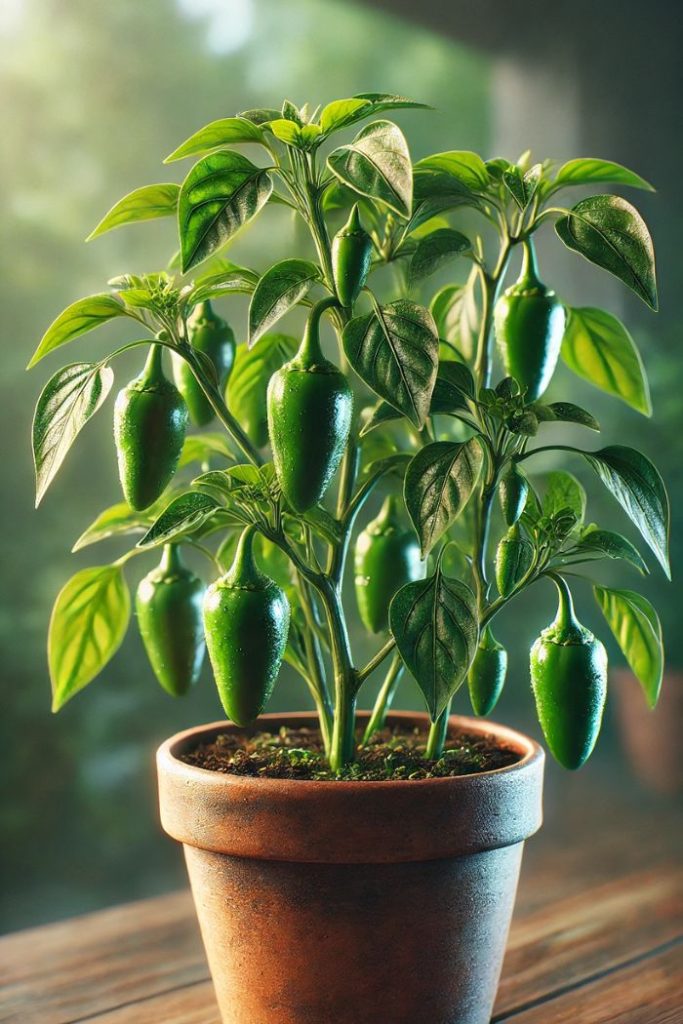
Direct Sunlight Hours
To guarantee ideal jalapeno growth, you should provide at least 6 hours of direct sunlight per day, with peak sun hours between 9 am and 3 pm being the most important. Meeting these sunlight requirements is essential, as jalapenos need intense light to thrive. Placing your pot near a south-facing window or outdoors in a sunny spot will make certain your plants receive the necessary daily exposure.
When it comes to direct sunlight hours, consistency is key. Aim to provide a consistent 6 hours of direct sunlight per day, and your jalapenos will respond with healthy growth and abundant fruiting. If you’re growing indoors, consider using grow lights to supplement natural light, especially during the winter months or in areas with limited sunlight.
Water and Maintain Soil Moisture
You’ll want to check the soil moisture daily, as jalapenos in pots dry out quickly, especially during hot or windy weather. Jalapeno plants thrive in well-hydrated soil, and consistent moisture levels promote healthy growth. To maintain ideal soil hydration, water your jalapeno plant when the top 1-2 inches of soil feel dry to the touch. Avoid getting water on the leaves to prevent fungal diseases. Water absorption is vital, so make sure the pot has good drainage holes to prevent waterlogged soil.
When watering, soak the soil gently but thoroughly, allowing excess water to drain from the pot. Check the soil moisture by sticking your finger into the soil up to the first knuckle. If the soil feels dry, it’s time to water. If it’s already moist, wait another day before watering again.
Fertilize Your Jalapeno Plant
Feed your jalapeno plant a balanced fertilizer at the recommended strength to promote robust growth and maximize pepper production. A balanced fertilizer provides the necessary nutrients for your plant to thrive, ensuring a nutrient balance that supports healthy development.

Before fertilizing, perform a soil analysis to determine the soil’s pH level and nutrient content. This analysis will help you identify any nutrient deficiencies, allowing you to choose a fertilizer that addresses these specific needs.
When selecting a fertilizer, opt for a water-soluble or organic option that’s specifically formulated for pepper plants. Avoid over-fertilizing, as this can cause more harm than good. Start with a weak solution and gradually increase the strength as needed.
Fertilize your jalapeno plant when it’s about 6-8 inches tall, and repeat every 1-2 weeks. By providing your plant with the necessary nutrients, you’ll be rewarded with a bountiful harvest of delicious, spicy jalapenos.
Prune for Better Growth
Pruning your jalapeno plant at the right time can make a significant difference in its overall growth and productivity. By pruning, you’re encouraging your plant to focus its energy on producing more fruit and developing a stronger root system.
To prune effectively, you’ll want to use proper pruning techniques. Start by removing any weak or spindly growth, as these can drain the plant’s energy. Next, identify the node, where a leaf meets the stem, and cut just above it. This will encourage new growth and promote a bushier plant. When pruning, always cut at a 45-degree angle, and make clean cuts to prevent tearing the stem.
As you prune, observe your plant’s growth patterns and adjust your pruning strategy accordingly. By pruning regularly, you’ll be rewarded with a healthier, more productive jalapeno plant.
Support the Plant as Needed
As your jalapeno plant grows, it may become top-heavy with blossoms and peppers, so be prepared to provide support using tomato cages, trellises, or stakes to keep it upright and encourage better fruiting.
You’ll want to provide support when the plant reaches around 6-8 inches tall, as this will help prevent it from toppling over and promote healthy growth. Stake options can include bamboo stakes, wooden stakes, or even metal stakes, depending on your preference.
For a more decorative approach, consider using trellis alternatives like a teepee trellis or an obelisk trellis. These won’t only provide support but also add visual interest to your container garden.
When choosing a support system, consider the mature size of your jalapeno plant and the weight of the peppers it will produce. By providing the right support, you’ll be able to enjoy a bountiful harvest of delicious jalapenos.
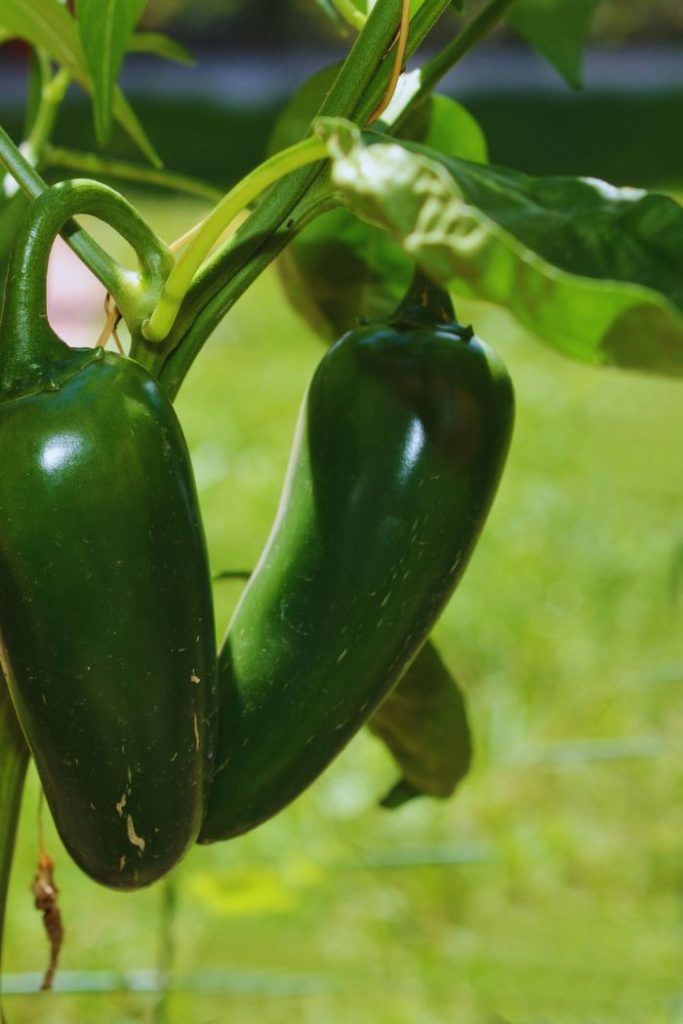
Monitor and Control Temperature
To guarantee ideal growing conditions for your jalapeno plant, you’ll need to monitor and control the temperature, keeping it between 65°F to 75°F (18°C to 24°C) during the day and no lower than 55°F (13°C) at night. To do this, place a thermometer near your pot, making sure it’s not in direct sunlight or drafts. This will give you an accurate reading of the temperature.
Heatwaves can be detrimental to your jalapeno plant, causing stress and reducing growth. If you live in an area prone to heatwaves, consider providing shade for your plant during the hottest part of the day. Conversely, if you live in an area with cold winters, bring your pot indoors to protect it from frost.
Greenhouse effects can also impact your plant’s temperature. If you’re growing your jalapeno in a greenhouse or indoor space with high humidity, be mindful of the increased temperature.
Seasonal fluctuations and climate influence can also affect your plant’s temperature. Be prepared to adjust your plant’s location or provide additional care to make sure it thrives in its environment.
Watch for Common Pests and Diseases
As you nurture your jalapeno plant, be vigilant for signs of pests and diseases that can quickly ruin your harvest.
You’ll want to keep a close eye out for aphids, which can spread quickly and weaken your plant, as well as fungal diseases that thrive in moist environments.
Aphid Infestation Warning
Regularly inspecting your jalapeno plants for signs of aphid infestation is crucial, as these tiny, soft-bodied insects can quickly colonize and weaken your plants. Aphids can be found on the undersides of leaves, stems, and flowers, and can cause curled or distorted leaves, as well as sticky honeydew droplets.
Understanding the aphid lifecycle is vital for managing infestations. Aphids undergo incomplete metamorphosis, with three distinct stages: egg, nymph, and adult. This lifecycle allows them to rapidly reproduce and adapt to their environment.
Fortunately, natural predators like ladybugs and lacewings can help control aphid populations. Introduce these beneficial insects into your garden to create a balanced ecosystem. Regularly inspecting your plants and maintaining good garden hygiene can also help prevent aphid infestations.
Fungal Disease Prevention
While maintaining a balanced ecosystem helps control aphid populations, it’s equally important to monitor your jalapeno plants for signs of fungal diseases, which can quickly spread and devastate your crop.
Fungal diseases thrive in moist environments, making it essential to guarantee good air circulation around your plants. You can achieve this by providing enough space between pots and pruning nearby plants.
Regularly inspect your plants for white, cotton-like growth, yellowing leaves, or black spots, which are common symptoms of fungal infections. If you notice any of these signs, isolate the infected plant immediately to prevent the disease from spreading.
Apply a fungicide specifically designed for treating fungal diseases on jalapeno plants. Additionally, consider soil sterilization to eliminate any fungal spores present in the potting mix. This can be done by baking the potting mix in the oven at 300°F (150°C) for 30 minutes.
Harvest Jalapenos at the Right Time
Timing is crucial when harvesting jalapenos, and you’ll want to pick them at the peak of ripeness, typically when they’re firm, glossy, and a deep green color. This is usually around 70-90 days after sowing, but it can vary depending on factors like weather, soil quality, and the specific jalapeno variety.
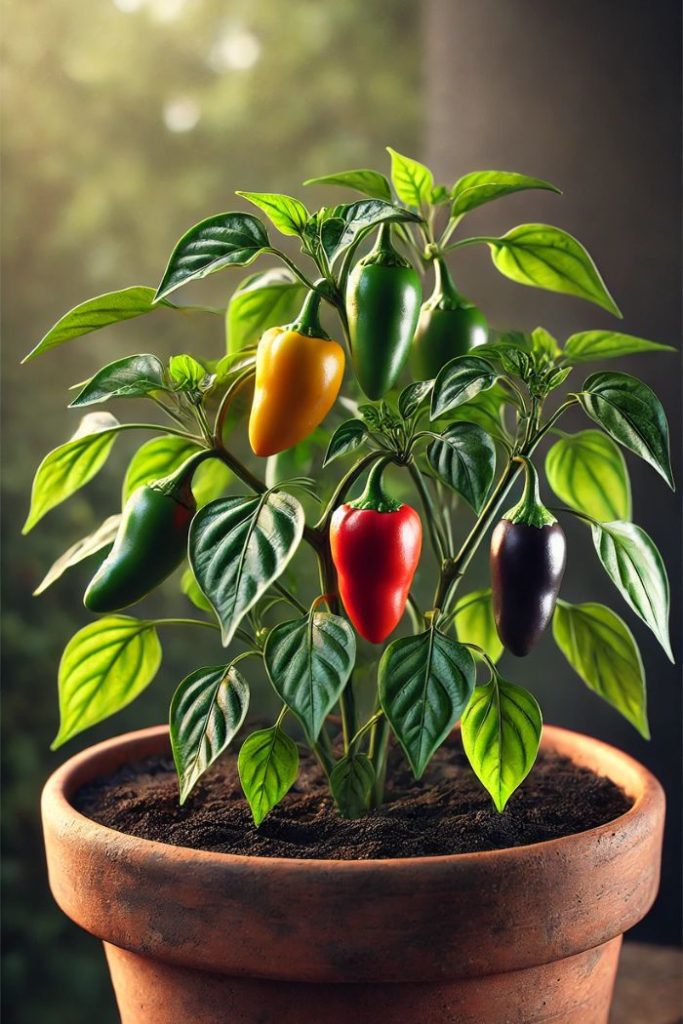
To guarantee ideal Jalapeno ripeness, inspect your peppers regularly, gently tugging on them to check for slight give. Avoid pulling too hard, as this can damage the plant or dislodge the pepper.
Practice pepper patience, as harvesting too early can affect the flavor and texture. If you pick them too soon, they mightn’t have reached their full potential. Conversely, leaving them on the plant for too long can cause them to turn red, become soft, and eventually fall off.
Preserve Your Harvest for Later
After enjoying the fruits of your labor, it’s time to think about preserving your jalapeno harvest for later use, ensuring that your flavorful peppers remain a staple in your kitchen throughout the year.
You’ve worked hard to grow those peppers, and now it’s time to make them last. One popular method is freeze-drying, which removes the water content from the peppers, allowing you to store them for up to 25 years. This method preserves the peppers’ flavor and nutritional value, making it an excellent choice for long-term storage.
Another option is canning, which involves packing the peppers in a sterile jar and sealing it to prevent spoilage. There are two common canning methods: water bath canning and pressure canning. Water bath canning is suitable for high-acid foods like jalapenos, while pressure canning is better suited for low-acid foods.
Regardless of the method you choose, make sure to follow safe canning practices to avoid contamination and spoilage. By preserving your jalapeno harvest, you’ll be able to enjoy your homegrown peppers all year round.

Troubleshoot Common Growing Issues
What’s causing your jalapeno plants to struggle, and how can you identify the root of the problem? As you tend to your potted jalapenos, it’s crucial to recognize the signs of distress and address them promptly.
One common issue is soil pH imbalance. If your soil is too alkaline or acidic, it can hinder nutrient uptake, leading to stunted growth or yellowing leaves. Check your soil pH regularly and adjust it if necessary.
Another culprit might be water quality. Using tap water with high chlorine or fluoride levels can damage your plants’ roots. Consider using filtered or rainwater instead.
Additionally, inspect your plants for signs of overwatering, such as droopy leaves or soft stems. Make sure your pot has proper drainage holes to prevent waterlogged soil. Fungal diseases can also plague your jalapenos, often due to excess moisture. Treat fungal infections promptly with a fungicide, and ensure good air circulation around your plants.
Frequently Asked Questions
Can I Grow Jalapenos Indoors Without Direct Sunlight?
You can grow jalapenos indoors without direct sunlight by utilizing indoor lighting, such as LED grow lights or HPS grow lights, which mimic artificial sunlight, providing the necessary spectrum and intensity for ideal growth.
How Often Should I Rotate My Jalapeno Pot for Even Growth?
You’ll want to rotate your jalapeno pot every 2-3 days to guarantee even growth, adjusting pot positioning to compensate for any uneven soil structure, which can impact root development and overall plant health.
Will Jalapenos Grown in Pots Produce as Many Peppers as In-Ground Plants?
You’ll be glad to know that potted jalapenos can produce a decent yield, but it’s important to take into account pot size and soil quality to maximize pepper production, as they directly impact your harvest’s quantity and quality.
Can I Grow Jalapenos in a Pot With Other Pepper Varieties?
You can grow jalapenos with other pepper varieties in a pot, using companion planting principles to select compatible varieties, ensuring harmonious growth and maximizing space, but be mindful of differing growing requirements and disease susceptibility.
Are Jalapenos Grown in Pots More Susceptible to Pests and Diseases?
When growing jalapenos in pots, you’ll find that they’re more susceptible to pests and diseases due to container vulnerabilities, especially if you’re growing pest-prone varieties, making it important to maintain good hygiene and monitoring practices.
Conclusion
By following these guidelines, you’ve successfully grown jalapenos in a pot.
You’ve selected the right potting mix, container, and seeds or seedlings.
You’ve provided adequate lighting, watered carefully, fertilized appropriately, pruned for growth, supported the plant, and monitored temperature.
You’ve watched for pests and diseases, and harvested at the right time.
Now, enjoy your fresh jalapenos or preserve them for later use.




